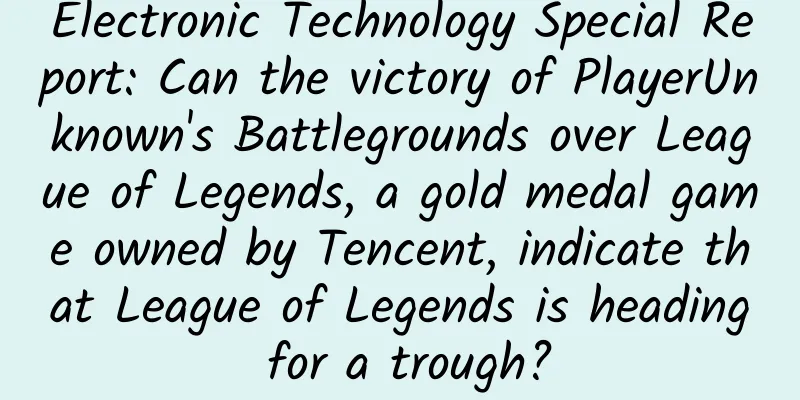How to analyze and evaluate the value of KOL investment?

|
Social network analysis (SNA) is a methodological approach that considers the social relationships among multiple actors and is applicable to the study of an entire unit such as a school, enterprise, organization or country. Considering the huge network of relationships existing in the Internet, this article introduces the basic concepts and practical applications of this methodology from the perspective of social and content products. 1. Relationship Building in the CommunityFirst of all, we need to clarify two important elements in SNA: actors and relationships. Actor: An actor is represented by an individual, with a circle in the figure. Relationship: Whether there is a connection between two actors, represented by a line, distinguishing between undirected and directed. The relationship matrix is an N*N matrix, where the vertical and horizontal axes represent actors, 1 represents the existence of a relationship, and 0 represents the non-existence of a relationship. In an undirected graph, the diagonal line can be used as the dividing line; in a directed graph, the complete matrix must be drawn to only look at the lower half. Take Zhihu users as an example: users have the right to choose to follow or not follow others, and the relationship between fans and those being followed is a directed relationship; and those being followed also have the right to choose whether to follow this fan, so the information contained in the directed graph is richer. Take user AE as an example: a maximum of 25 relationships can be generated (the first row represents that A follows B and D, and the first column represents that A is followed by B and E). In the community graph, you can see the relationship between two users more directly and clearly. This local network composed of five users can be seen as a microcosm of the Zhihu user network. 2. KOL FormationThe number of lines pointing to and pointing to each user reflected in the above figure varies, and measuring this metric helps us understand the flow of "power" within the entire community. Simply put: the more arrows an actor gets, the higher his position and prestige in the community. Here, centrality is usually used to quantify this indicator, which refers to the density of a point. This indicator is called degree centrality.
By calculating the centrality relationship of the five users in the figure above, we can find that the local centrality and the overall centrality of users A/B/C/D are equal, and user E is in a marginal state. By using software to analyze the degree, we can more intuitively see the power relations in this micro-community. Repeating the above steps with the mutual attention relationship of eight users can show a more intuitive display. It is obvious that user A is connected with the most users in the small world and is the central figure. In addition to degree centrality, other measurement indicators include closeness centrality and betweenness centrality (used to indicate the key person associated with the KOL and the degree to which they serve as intermediaries, respectively). 3. Interest Circle TopologyTaking the eight users in the above figure as an example, ADCE users form a "loop" with a length of 4 (which also includes ABCD, a loop with a length of 4, and ABD and BCD, two loops with a length of 3). Considering the directed nature of the relationship, ABD is a directed ring and can be followed by ADB to complete a complete closed loop; while ADCE, although connected by a line, is not on a continuous chain in a fixed direction and can only be regarded as a semi-ring. Cliques are an extension of the concept of rings, where the n in n-clique refers to the length of the longest path of communication between clique members; our initial example (five users) gives a 2-clique group. Now let's define the criteria for forming a "social circle". If two-thirds of the members of a faction are exactly the same, then these factions will be merged into one circle. Next, we can define different criteria to expand this circle. Corresponding to Zhihu, the small circle that is formed first can be understood as a group of people who are related to each other and are equally interested in a certain issue, and the expanded big circle is a group of people who have the same interest in a certain topic. 4. ClusteringClustering technology has been widely used in Internet products, but in SNA, clustering emphasizes hierarchical structure (i.e., stratification based on individual social relationships). Taking the case of eight users as an example, three clusterings were performed, where the leftmost number refers to the ranking of degree centrality. User A is ranked 1 because he has the largest degree centrality. The first-level clustering results: FGH marginal users are grouped into one category, and BD middle-ranking users are grouped into another category. Then continue clustering until all users are classified into one category. The difference between circles and clusters is that the concept of factions is divided according to the similarities of members, and the circles formed are based on interests; clusters are divided according to the number of member relationships, which is a classification of power levels. Taking Zhihu as an example, these eight users may all be fans of technology and Internet topics. They are interested in the Internet of Things, JAVA and artificial intelligence respectively in a 3/3/2 structure. These three categories can form a faction separately; but each user has a different relationship between following and being followed. FGH users have fewer relationships, but they do not have to be in the same faction. V. ConclusionThanks to the number of users and relationship chains contributed by the majority of netizens, the application scenarios of SNA analysis have now expanded to multiple fields, such as social circle analysis in social products - product and content recommendations based on social relationships, online information dissemination, etc. As long as there are people, SNA can be used to analyze strong and weak relationships, closeness, and group classification. As for the formation and discovery of KOLs discussed in this article, it can be used as one of the quantitative reference standards for commercial advertising . In social networks, the core indicators used to evaluate KOLs are generally the content created by the KOLs themselves and the people they influence (the latter is quantified into collectible indicators, generally the number of fans, that is, the one-way attention relationship in the social graph, which can be marked with multiple directed lines). The overlap of KOL fans overlaps with the concept of factions in SNA. Based on custom criteria: Advertisers can calculate the overlap between two KOLs’ followers and choose the degree of overlap based on the expected number of reach. Calculate the expected penetration rate based on the circles of KOLs of different sizes: SNA can actually help advertisers save on advertising costs in the early stages. Of course, after advertising, they must continue to pay attention to indicators such as APRU and ROI. Thinking in reverse, we can also understand why buying fans has become one of the common chaos in the industry. Therefore, in addition to following, many social products have begun to consider other interactive factors as reference indicators to eliminate the chaos caused by zombie fans. Author:47 Source:47 |
<<: What are the functions of the pet mini program? How to develop a pet store mini program?
>>: Analysis of mobile advertising market in Q1 2021
Recommend
Create a successful knowledge live broadcast from 0 to 1!
According to the survey data of [2021 China's...
Logitech x Baidu Brain VOICE M380 Voice Wireless Mouse Review: Free your hands and speak fluently
As the saying goes, the driving force behind tech...
Operational methodology: To quickly get started with operations, you need this "five-step method"
The essence of operation is actually very simple....
How to effectively and accurately reach users with activities
In fact, in the user-operated activity-based mark...
Xiaohongshu promotion: Xiaohongshu user growth methodology!
Let me first talk about my own achievements: I cr...
MINI is going to use electronic gear levers, how can you still use front-wheel drive BMW with mechanical gear levers?
Recently, MINI officially released official pictu...
Here are seven key points about APP message push
So, how to build a good APP message push mechanis...
Operators, don’t be the 80% of odd jobs!
Part of this article is quoted from the article &...
How can the New Year's Flag "stand firm"? Popular science is here →
Lose weight like a flash of lightning, be sure to...
Unprecedented! Taobao will support WeChat payment: Special price version has submitted WeChat mini program application
[[389619]] Earlier, there were reports that Aliba...
Qingyang: Basic course on dragon taming tactics, small capital snowball trading model
Qingyang: Basic Course on Dragon Taming Tactics, S...
Product operation tips: What are the methods to improve product conversion rate?
When we start promoting a product, the first thing...
National Safe Medication Month丨Starting from the smell, interesting talk about the "four qi and five flavors" of traditional Chinese medicine in Chinese characters
Author: Yang Yajin, Department of Pharmacy, 9th 9...
Summary of various sorting algorithms
Sorting algorithms are the most basic and commonl...




![[Creative Cultivation Program] The small world in the intestines is also full of blood and gore. How can we eat well to help intestinal probiotics take over?](/upload/images/67f257e8a72f8.webp)




